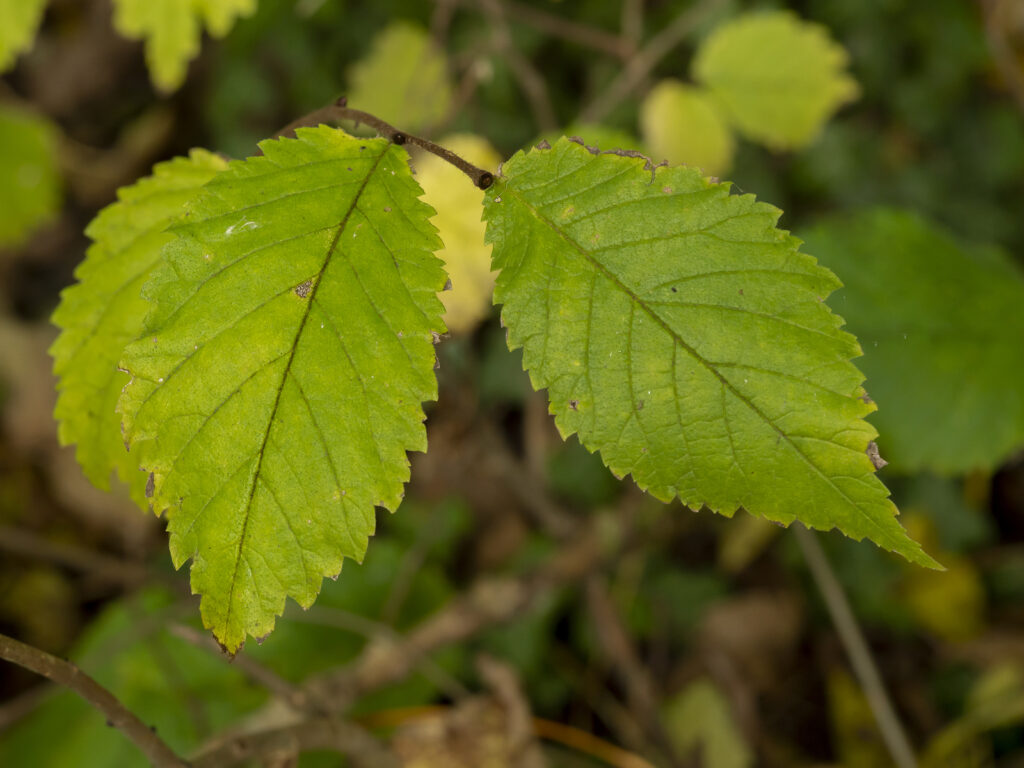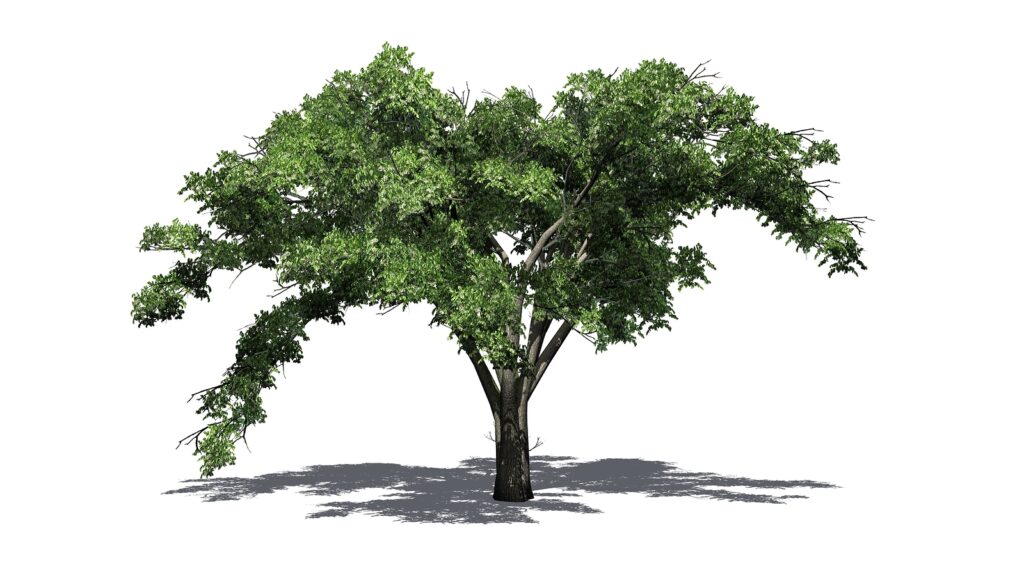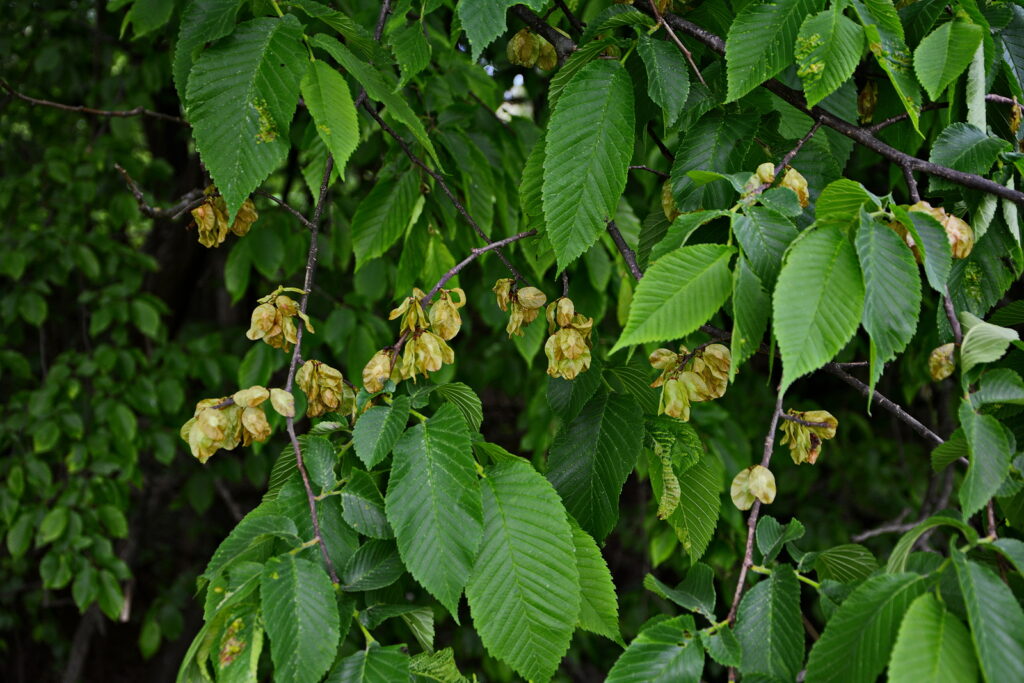Ulmus is a genus of deciduous trees commonly called elms. Elms are commonly grown as shade trees. They are fast-growing and have high-spreading canopies. Elms are environmentally tough.
But elms have notable drawbacks. They are shallow-rooted making it difficult to grow other plants beneath them; they have narrow branch crotches which can result in splitting in storms; and they are susceptible to disease spread by bark beetles. In particular, American elms, Ulmus americana, have been decimated by what is known as Dutch elm disease.
Asiatic species of Ulmus are the most disease-resistant. Breeding and selection programs are producing progressively more resistant American elms.
Elms can be planted as specimens and they are suited to large landscapes and parklands.
Ulmus is a genus of about 45 species. They are native to woodlands in Northern temperate regions.

Get to know Ulmus
- Plant type: Deciduous and semievergreen trees
- Growing zones and range: Zones 4 or 5 to 9
- Hardiness: Hardy to Zone 4
- Height and width: Varies, 40-100 feet (12-20m) tall and just as wide depending on species
- Growth rate: Fast
- Form and habit: Round-topped
- Foliage: Handsome oval, alternate, dark green leaves, usually with unequal sized bases and poor fall yellow color; trunk and branches have beautiful gray-orange bark that exfoliates in lacy patches
- Flowers: Clusters of tiny bell-shaped flowers, each with 4-9 segments joined at the bases, are usually produced from axillary buds, but sometimes from leafy buds
- Fruits: Each consists of a seed surrounded by a green to brown, rounded to elliptic, membranous wing
- Bloom time: Spring and fall
- Uses: Shade, specimen, shade
- Common name: Elm
- Botanical name: Ulmus
- Family name: Ulmaceae
- Origin: North temperate regions
Where to plant Ulmus
- Plant Ulmus in full sun or partial shade.
- Ulmus are adaptable to many soils and climates; does best in moist, well-drained soil deep enough to accommodate the trees’ long root structures. Keep soil moist with mulch.
When to plant Ulmus
- Transplant Ulmus easily in early fall or spring.
- Sow seed in containers outdoors in autumn or spring.

Planting and spacing Ulmus
- Ulmus have aggressive and near the surface, making it difficult to grow any other plants beneath.
- Plant Ulmus 40-70 feet (12-20m) apart.
How to water and feed Ulmus
- Give Ulmus regular water.
- Maintain vigor by feeding and watering copiously. Vigorous trees are less susceptible to pests.
- Feed Ulmus with an all-purpose organic fertilizer in spring.
How to care for Ulmus
- Prune Ulmus in fall.
Ulmus pests and diseases
- Ulmus are susceptible to Dutch elm disease, spread by bark beetle; it has killed millions of American elms throughout North America and can attack most other species.
- Ulmus are also susceptible to attacks by various other beetles, leafhoppers, aphids, and scale, making them either time consuming to care for or messy (or both).
- Ulmus branch crotches are often narrow, splitting easily in storms.

Ulmus propagation
- Take greenwood cuttings in summer, or remove rooted suckers in autumn.
- Graft in winter or spring.
Ulmus varieties to grow
- Ulmus carpinifolia, Smooth-leafed elm, deciduous. Native to Europe. To 100 feet (30m) tall and 70 feet (20m) wide, with upright branches, weeping branchlets. Shiny deep green leaves to 2-3.5 inches (5.1-8.9cm) long. Prone to many pests and diseases, though moderate in susceptibility to Dutch elm disease.
- U. parvifolia, Chinese elm, Lacebark elm, semievergreen or deciduous, depending on winter temperatures and individual tree’s heredity. Fast growth to 40-60 feet (12.2-18.3m) tall and 25-40 feet (8-12m) wide. Extremely variable in form, but generally spreading, with long, arching, eventually weeping branchlets. On trunks of older trees, bark sheds in patches (somewhat as bark of the sycamore does), creating beautiful mottling in many specimens. Leathery dark green leaves are .8-2.5 inch (2-6.4cm) long, evenly toothed; mediocre display of yellow to reddish orange in fall. Good resistance to Dutch elm disease, elm leaf beetle, and Japanese beetle.
- U. pumila, Siberian elm, deciduous. To 70-100 feet (20-30m) tall and 40 feet (12m) wide. Leaves .8-2 inches (2-5cm) long, smooth, dark green. Endures cold, heat, aridity, and poor soil. Has brittle wood and weak crotches, and—though resistant to Dutch elm disease—is not a desirable tree. Possibly useful in holding soil against erosion; fast growth also makes it suitable for windbreak or shelterbelt. Papery, winged seeds disperse seedlings over wide area. Very susceptible to elm leaf beetles.















